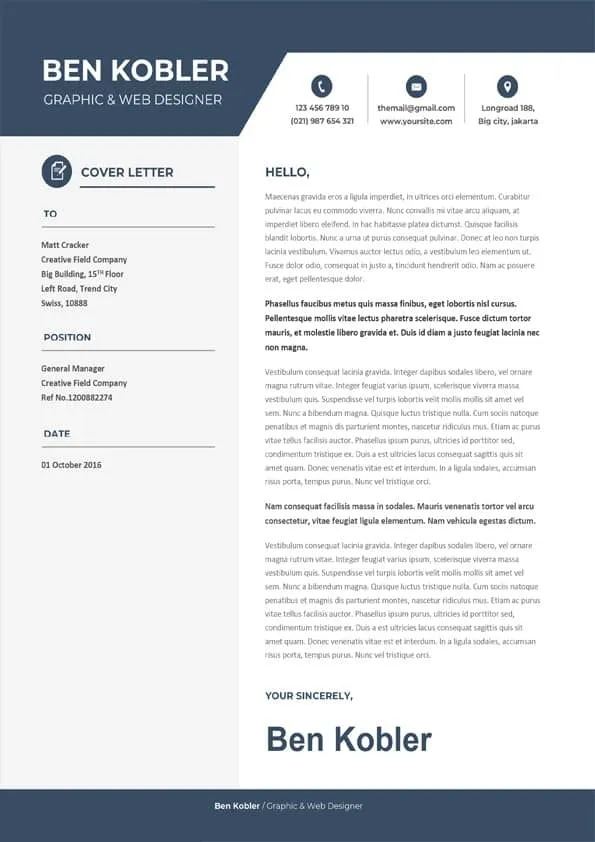What Is Creative Cover Letter Writing?
Creative cover letter writing goes beyond the standard, often formulaic approach to job applications. It’s about using the cover letter as an opportunity to showcase your personality, writing skills, and unique value proposition in a way that captures the reader’s attention. Instead of simply listing qualifications, a creative cover letter tells a story, demonstrates your understanding of the role and company, and leaves a lasting impression. This approach is particularly effective in fields where creativity and communication skills are highly valued, such as marketing, design, and writing itself. However, it can be beneficial in any industry to demonstrate your ability to think outside the box and make yourself memorable.
Why Creative Cover Letters Matter
In a sea of generic applications, a creative cover letter helps you stand out from the competition. Recruiters and hiring managers often spend very little time reviewing each application, so grabbing their attention quickly is crucial. A well-crafted, creative cover letter demonstrates that you’ve invested time and effort into your application, signaling your genuine interest in the role and the company. It also provides an opportunity to showcase your personality, which is something a standard resume cannot always convey. By using storytelling, unique formatting, or a distinctive tone, you can create a memorable first impression that increases your chances of getting an interview and helps you to break the mold. Remember, the primary goal is to spark interest and move your application to the next stage.
Benefits of a Creative Cover Letter
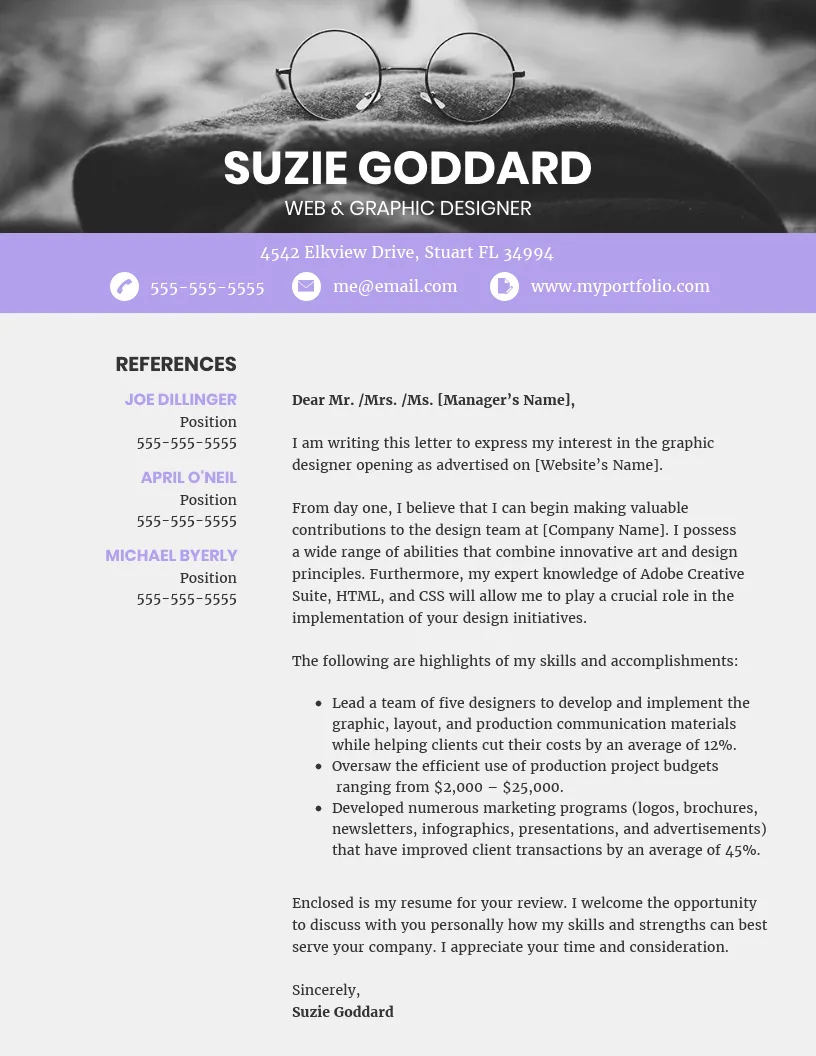
The benefits of a creative cover letter extend beyond simply getting noticed. It offers a platform to demonstrate your communication skills in a more engaging way. Creativity allows you to tailor your letter to the specific job and company, showcasing your understanding of their needs and how you can meet them. This personalization resonates more effectively with recruiters and hiring managers. It allows you to highlight unique skills, experiences, or perspectives that set you apart from other applicants. By crafting a narrative around your qualifications, you make it easier for the reader to connect with you and remember your application. Ultimately, a creative cover letter is more likely to create a positive and lasting impression, increasing your chances of securing an interview and, ultimately, landing the job.
Understanding Your Audience
Before you start writing, consider your audience – the hiring manager or recruiter who will be reading your cover letter. Research their background, their role within the company, and their preferences. What kind of language do they use? What are their priorities? Understanding your audience allows you to tailor your cover letter to their specific needs and expectations. Think about what they are looking for in a candidate and how you can demonstrate that you meet those requirements. Be professional, but also find ways to let your personality shine through. Always tailor your content to match the company’s culture, tone, and values, showing that you understand their business and the role they are hiring for. Your goal is to create a connection and demonstrate that you are a good fit.
Researching the Company Culture
Company culture plays a significant role in your application. Take the time to research the company’s values, mission, and brand. Visit their website, social media accounts, and any other online resources available. Look for clues about their communication style, whether it’s formal, casual, or somewhere in between. Review any press releases, blog posts, or employee testimonials to understand the company’s personality. Tailoring your cover letter to align with the company culture shows that you are a good fit and that you understand their values. Using language and a tone that resonates with the company culture will show that you have researched the company and that you are serious about working there. This preparation increases your chances of making a positive first impression and advancing in the application process.
Highlighting Your Uniqueness
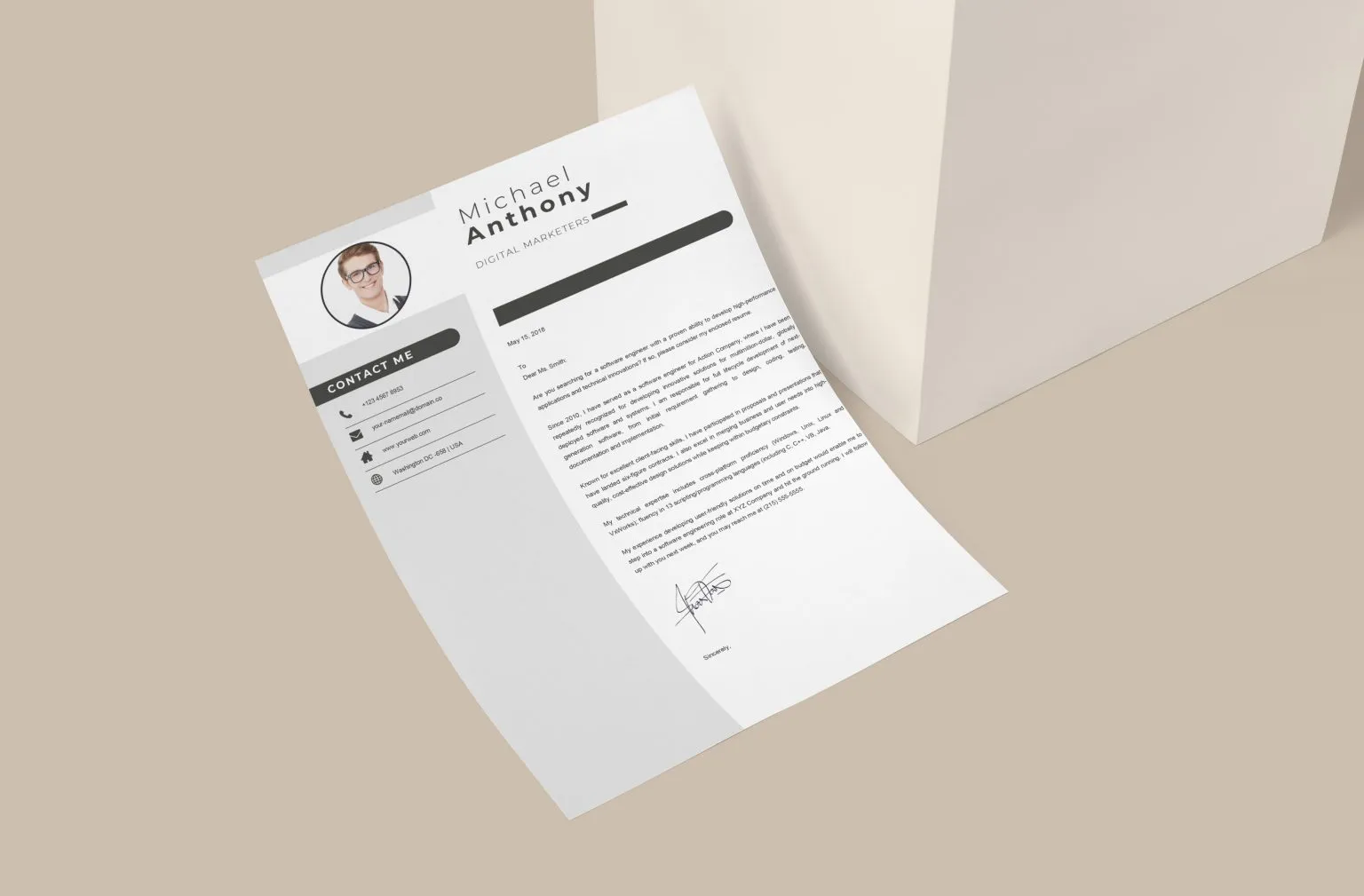
Your cover letter is your opportunity to highlight what makes you unique. Don’t just list your qualifications; tell a story that showcases your personality, skills, and experiences. Reflect on what sets you apart from other candidates. What are your unique strengths, accomplishments, or perspectives? Identify specific examples that demonstrate your abilities and use them to support your claims. Consider your writing style, and inject your personality into the letter. Creativity comes in many forms; you can use interesting phrasing, anecdotes, or a specific tone. Ultimately, the goal is to grab the reader’s attention and create a memorable impression. Make sure that your uniqueness is appropriate for the role and company. Ensure your individuality complements your professionalism.
Show, Don’t Tell in Your Cover Letter
Instead of simply stating that you possess certain skills or qualities, use examples to illustrate your abilities. Show, don’t tell is a fundamental principle of effective writing. Provide concrete examples of how you’ve used your skills to achieve results. Instead of saying “I am a good problem-solver,” describe a specific situation where you identified a problem, developed a solution, and achieved a positive outcome. Use action verbs to paint a vivid picture of your accomplishments. Quantify your achievements whenever possible. This approach helps the reader to understand your capabilities and makes your cover letter more compelling and persuasive. By grounding your claims in specific examples, you demonstrate your value and increase your chances of getting an interview.
Start with a Compelling Opening
The opening of your cover letter is critical. It needs to capture the reader’s attention immediately. Start with something interesting or unexpected, and avoid clichés. Instead of a generic greeting like “To Whom It May Concern,” try addressing the hiring manager by name if possible. You can also use a brief anecdote, a surprising statement, or a thought-provoking question to hook the reader. Your opening should immediately convey your enthusiasm for the role and the company, and it should set the tone for the rest of your letter. The goal is to make the hiring manager want to read on and learn more about you. Your opening is your first opportunity to stand out, so make it count.
Use Storytelling Techniques

Storytelling is a powerful tool to make your cover letter more engaging and memorable. Use a narrative structure to showcase your skills and experiences. Start with a problem or a challenge, describe the actions you took, and then highlight the positive results. This approach helps to create a connection with the reader and makes your accomplishments more relatable. Your stories should be concise, relevant, and tailored to the job description. Avoid overly long or complex narratives. A well-told story can make your cover letter far more interesting than a simple list of qualifications. The aim is to create a compelling narrative that demonstrates your skills, experience, and personality. Storytelling helps readers to remember your application.
Incorporate Visual Elements
Visual elements can make your cover letter more appealing and memorable. Consider using a clean and visually engaging layout. Choose a professional font that is easy to read. Use white space effectively to avoid a cluttered appearance. You can also incorporate subtle design elements such as a well-placed header, a unique font for your name, or bullet points to break up text. Be cautious about using too many visual elements, which can detract from the content. Make sure that your design choices are consistent with the company’s brand and your own personal brand. Your design choices should enhance the readability and overall impact of your cover letter. Remember, the goal is to make your cover letter stand out positively without distracting from its core message.
Formatting and Design Tips
Formatting and design are crucial aspects of a creative cover letter. Choose a professional and easy-to-read font, such as Arial or Times New Roman. Ensure that the font size is appropriate for the reader. Maintain consistent spacing between paragraphs and sections, using clear headings and subheadings to organize your content. Use bullet points to highlight key skills or achievements. Pay attention to the layout of the page, ensuring that your content is well-balanced and visually appealing. Use ample white space to avoid a cluttered look. Consider using a simple design element, such as a border or a unique header. Your formatting should be professional, clean, and easy to follow. The goal is to create a cover letter that is both visually appealing and easy to read, ensuring that your message is effectively conveyed.
Choosing the Right Font

The font you choose for your cover letter can significantly impact its readability and overall appearance. Opt for a professional and easy-to-read font, such as Arial, Calibri, or Times New Roman. Avoid overly ornate or unusual fonts that might be difficult to read. Stick to a font size between 10 and 12 points. Ensure that your font choice is consistent with your resume and other application materials. It should reflect a sense of professionalism while still allowing your creativity to shine through. If you are submitting your application electronically, it is best to choose a standard font that will display correctly on all devices. The right font will enhance your cover letter, making it more attractive and ensuring your message is clear and easy to understand.
Spacing and Layout
Spacing and layout play a crucial role in the overall readability and visual appeal of your cover letter. Use consistent spacing between paragraphs, typically single-spaced within paragraphs and double-spaced between paragraphs. Employ clear and concise headings and subheadings to organize your content and guide the reader. Use bullet points to highlight key skills, achievements, or responsibilities. Ensure ample white space around text, providing visual breathing room. Avoid cramming too much information onto a single page. The layout should be clean, well-organized, and easy to follow. A well-designed layout enhances the overall impact of your cover letter, making it more attractive and ensuring that your message is effectively conveyed. A well-structured layout helps the reader absorb your information and makes your cover letter stand out.
Tailoring Your Letter to the Job
Tailoring your cover letter to the specific job is essential. Carefully review the job description and identify the key skills and requirements. Align your experience and qualifications with the job requirements. Use the same keywords and terminology as the job description. Focus on the skills and experiences that are most relevant to the role. Provide specific examples of how you’ve demonstrated those skills in the past. Demonstrate your understanding of the company and the role. Tailoring your cover letter shows the hiring manager that you have read the job description, understand the role, and are genuinely interested in the position. By customizing your letter for each job, you increase your chances of making a strong impression and getting an interview.
Matching Skills to Requirements
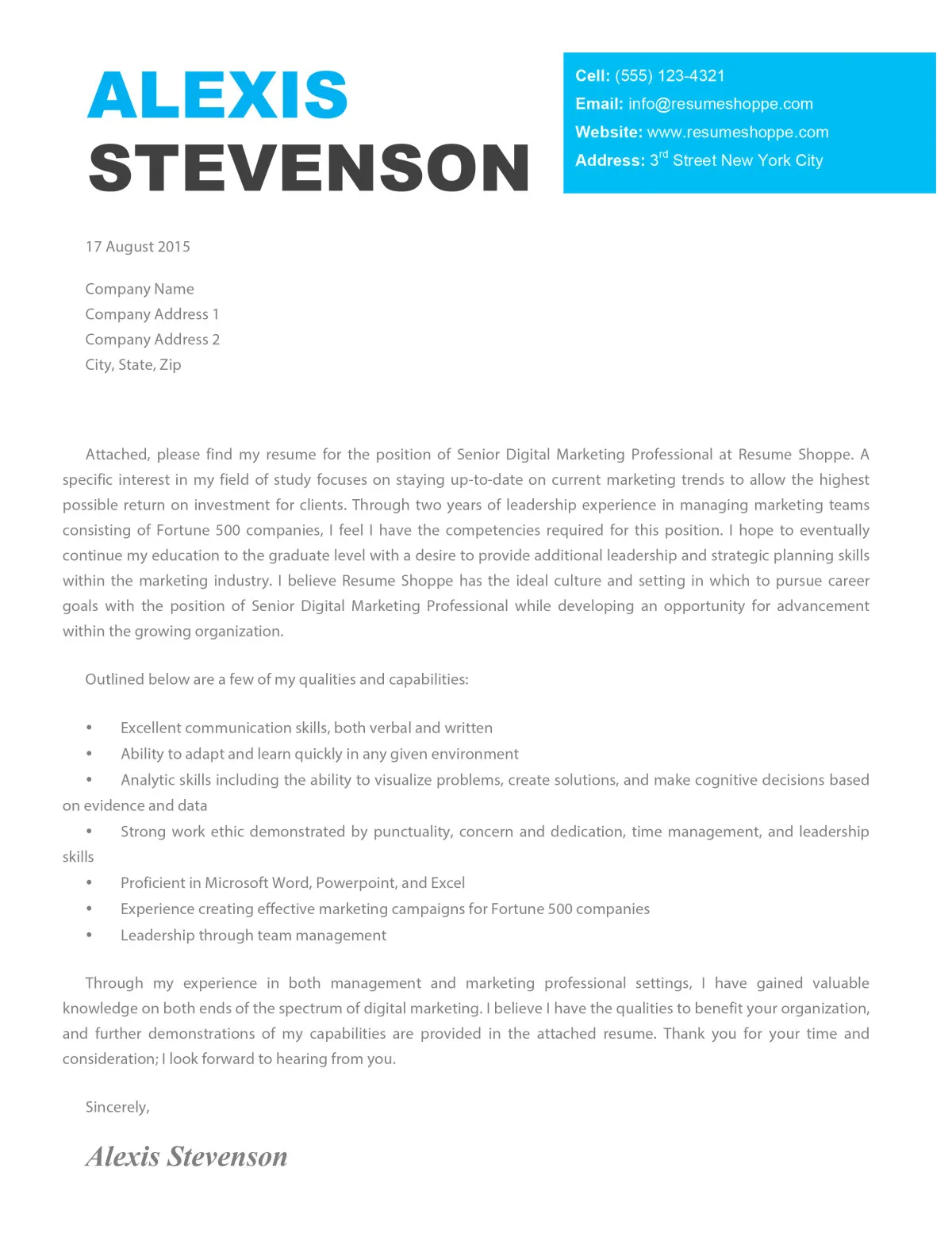
Carefully analyze the job description and identify the skills and qualifications that the employer is seeking. Then, match your skills and experiences to those requirements. Highlight your most relevant skills and provide specific examples to demonstrate your capabilities. Quantify your achievements whenever possible. Use keywords and phrases from the job description to show that you speak the same language as the employer. If a skill isn’t mentioned explicitly, look for implicit requirements. Tailoring your skills to the requirements shows that you have the necessary qualifications for the job. It is more than just listing your skills. It shows how you used your skills to solve problems and deliver results in the past. This customization increases your chances of a positive response.
Showcasing Relevant Experience
Your cover letter provides an excellent opportunity to showcase relevant experience. Focus on the experiences that align with the job requirements. Describe your responsibilities and accomplishments in a clear and concise manner. Use action verbs to highlight your contributions. Provide specific examples of how you have used your skills to achieve results. Quantify your achievements whenever possible. Tailor your experience to match the job description. The goal is to demonstrate that you have the experience and expertise the employer is seeking. When you showcase your experience, you increase your chances of getting an interview. By highlighting how your experience relates to the role, you will stand out.
Avoiding Common Mistakes
Several common mistakes can undermine your cover letter. Avoid generic content. Each cover letter should be tailored to the specific job and company. Proofread your letter carefully for grammar and spelling errors. Use a professional tone. Refrain from being overly casual or informal. Don’t simply restate your resume. The cover letter should provide additional context and highlight your unique qualifications. Avoid overly long paragraphs or sentences. Keep your letter concise and easy to read. Do not include irrelevant information or unrelated experiences. Focus on the information that is most pertinent to the job. Avoiding these common mistakes will help you create a polished and effective cover letter.
Grammar and Spelling Errors
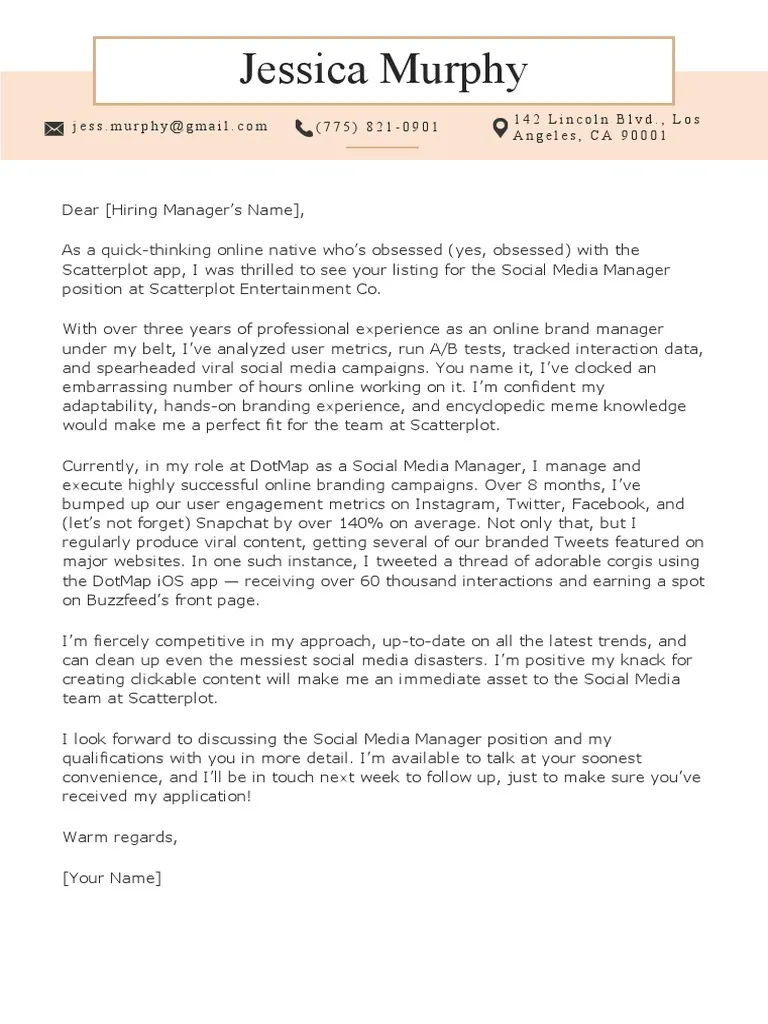
Grammar and spelling errors can damage your credibility. Proofread your cover letter carefully before submitting it. Use a grammar checker and a spell checker to catch any errors. Have a friend or family member review your letter for a fresh perspective. These errors can make you look unprofessional and careless. They can undermine your message and distract the reader from your qualifications. Always ensure your cover letter is free of errors. Attention to detail is critical in any professional context. Proper grammar and spelling shows your respect for the hiring manager and makes your cover letter more effective.
Generic Content
Avoid using generic, one-size-fits-all content in your cover letter. Tailor your letter to the specific job and company. Review the job description and identify the key requirements. Then, highlight your relevant skills and experiences, and provide specific examples. Use the company’s name and address the hiring manager by name whenever possible. Personalize your letter to show that you’ve done your research and are genuinely interested in the role and the company. Generic content suggests a lack of effort and can diminish your chances of getting an interview. By customizing your letter for each job application, you show that you are serious about the opportunity. Tailored content shows you are a good fit.
Overly Formal Tone
While maintaining a professional tone is crucial, avoid being overly formal. Stiff or overly formal language can make your cover letter sound impersonal and robotic. Find a balance between professionalism and personality. Use a friendly and engaging tone to connect with the reader. Allow your personality to shine through. Avoid using archaic language or overly complex sentences. Use natural, conversational language. Your goal is to write a cover letter that is professional, but also reflects your personality and enthusiasm. Your tone should be professional. It should show a degree of your personality.
Call to Action and Closing
Include a clear call to action at the end of your cover letter. This tells the reader what you want them to do next. State your interest in an interview. Specify how you can be reached. Reiterate your enthusiasm for the role. Keep your closing concise and professional. This is your opportunity to reiterate your interest in the position and to provide the reader with clear instructions on how to contact you. A strong call to action increases your chances of receiving an interview. It is your opportunity to leave a positive lasting impression. Close with a confident statement.
Ending with a Strong Statement
End your cover letter with a strong statement that reinforces your interest in the position. Restate your key qualifications and how they align with the job requirements. Express your enthusiasm for the opportunity. Thank the reader for their time and consideration. A strong closing statement leaves a lasting impression and increases the likelihood of getting an interview. Your closing should be confident and professional. It should convey your passion for the role and your commitment to the company. The closing is your final chance to persuade the reader. Your final words are important, so end with confidence.
Contact Information
Make sure your contact information is easily accessible and up-to-date. Include your full name, phone number, email address, and professional social media profiles, such as LinkedIn. Ensure that your contact information is clearly displayed. Use a professional email address. Double-check the accuracy of your information. Providing accurate contact information makes it easy for the hiring manager to reach you. Keep your contact details consistent across your resume and cover letter. Your contact information must be easily accessible. Make sure the hiring manager can contact you.
